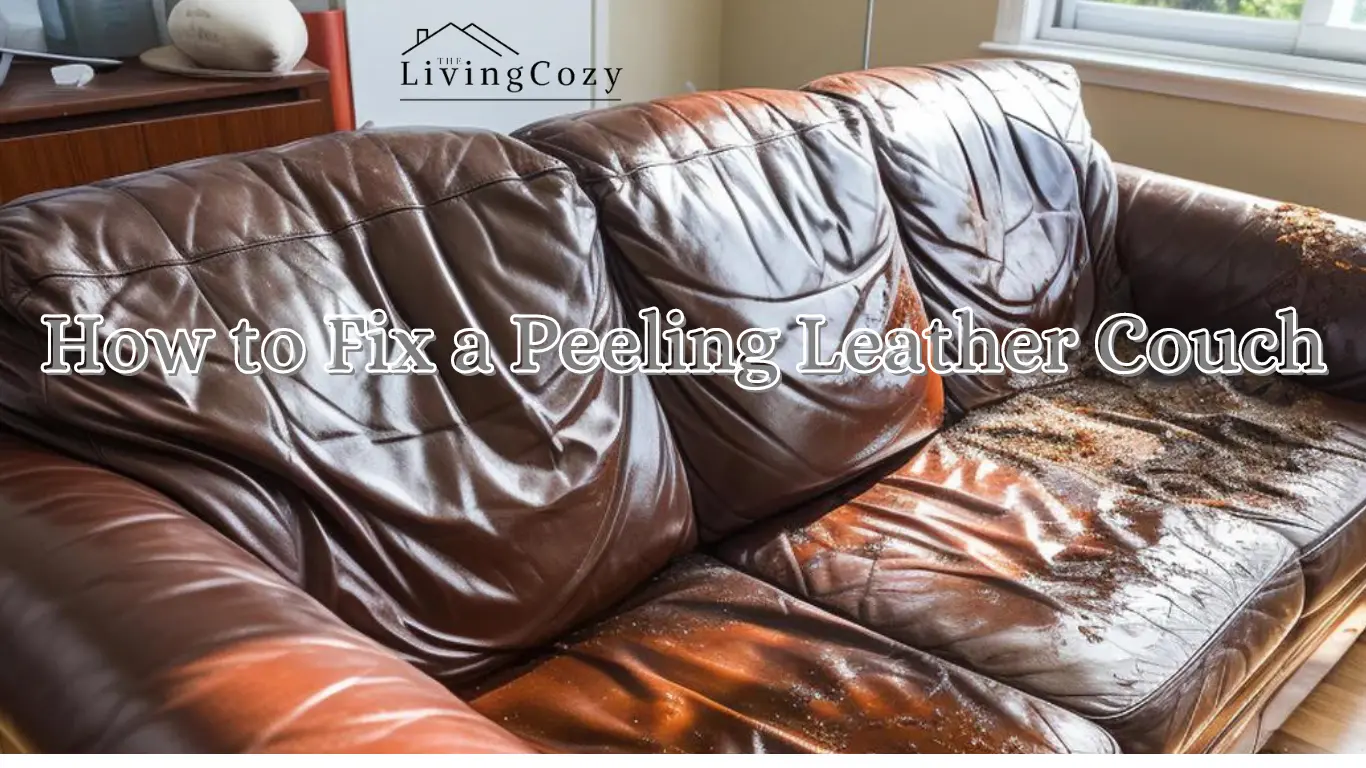There are a few steps you can take to fix it. Clean the affected area with a mild soap and water to remove dirt or debris. Use a leather repair kit to fill the peeled areas and smooth the surface. Apply a leather conditioner to restore moisture and flexibility to the leather. With proper care and maintenance, you can extend the life of your leather couch and keep it looking great for years to come.
What Is My Leather Couch Made of?
The main material used for my leather couch is, of course, top-grain leather. This premium material is known for its durability, softness, and natural grain patterns. The leather frame of my couch is constructed using sturdy hardwood or metal for maximum support and longevity.
High-density foam, Sofa fabric, polyester fiber, and sometimes down feathers create a plush seating experience while ensuring that the couch maintains its shape over time.
Each component in my leather couch is exactly selected and assembled to create a harmonious balance of elegance and endurance – making it not just a piece of furniture but an essential part of my home’s aesthetic.
Full-Grain Leather:
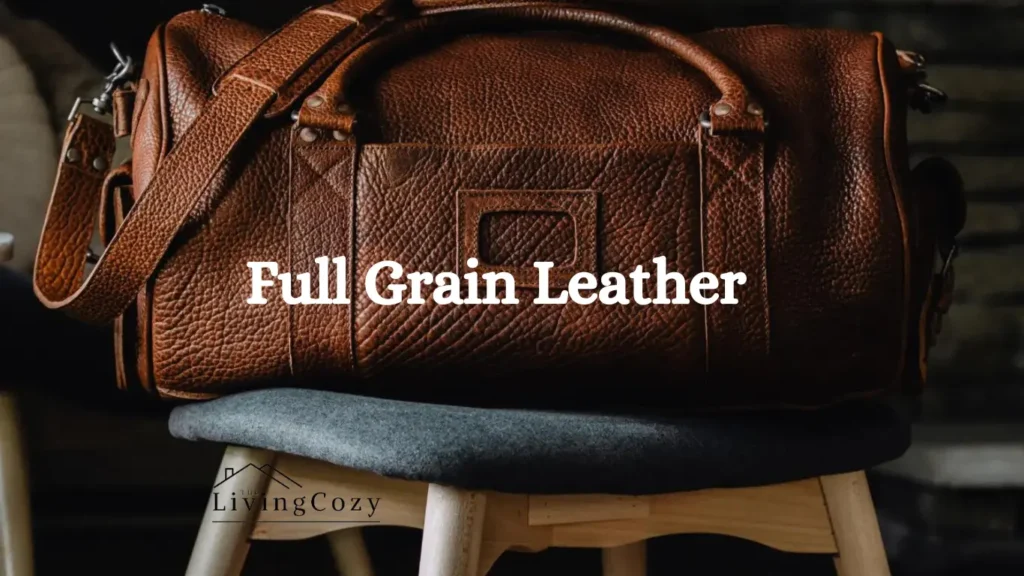
Full-grain leather is the epitome of quality and durability in the world of leather products. Sourced from the hide’s top layer, it possesses natural marks and textures that give each piece a unique character.
Different from other types of leather, full-grain retains its original grain, allowing for breathability and a patina that only improves with age. This makes it ideal for high-end goods such as fine furniture, luxury bags, and sturdy footwear.
Full-grain leather’s exceptional strength means that items crafted from this material are designed to withstand years of use without losing their beauty or functionality. These timeless qualities continue to position full-grain as the premier choice for those seeking enduring elegance in their leather goods.
Top-Grain Leather:
Full-grain and top-grain leather undergo a sanding process that removes surface imperfections, resulting in a smoother and more uniform appearance. This makes it ideal for luxury furniture, handbags, and accessories.
Top-grain leather is more resistant to stains and fading than other leather types, making it an excellent investment for long-term use.
Split-Grain Leather:
Split-grain leather has its unique characteristics and benefits that make it worth considering. This type of leather is created from the lower layers of the hide after the top grain has been removed. The result is a thinner, more flexible material that offers a different look and feel than full-grain leather.
Split-grain leather is its affordability. Because it utilizes a lower portion of the hide, it can be produced at a lower cost than full-grain leather, making it an accessible option for those looking for a quality leather product without breaking the bank.
Split-grain leather often retains a smooth and uniform surface, making it an ideal choice for those who prefer a more consistent appearance in their leather goods.
Nubuck Leather:
Nubuck leather is a luxurious material that exudes sophistication and style. Different suede nubuckes undergo a unique sanding process, resulting in a finer, smoother surface while retaining its velvety texture.
This makes it perfect for high-end fashion items such as shoes, handbags, and jackets. One of the most appealing aspects of nubuck leather is its ability to develop a beautiful patina over time, adding character and depth to the material.
Bi-Cast Leather:
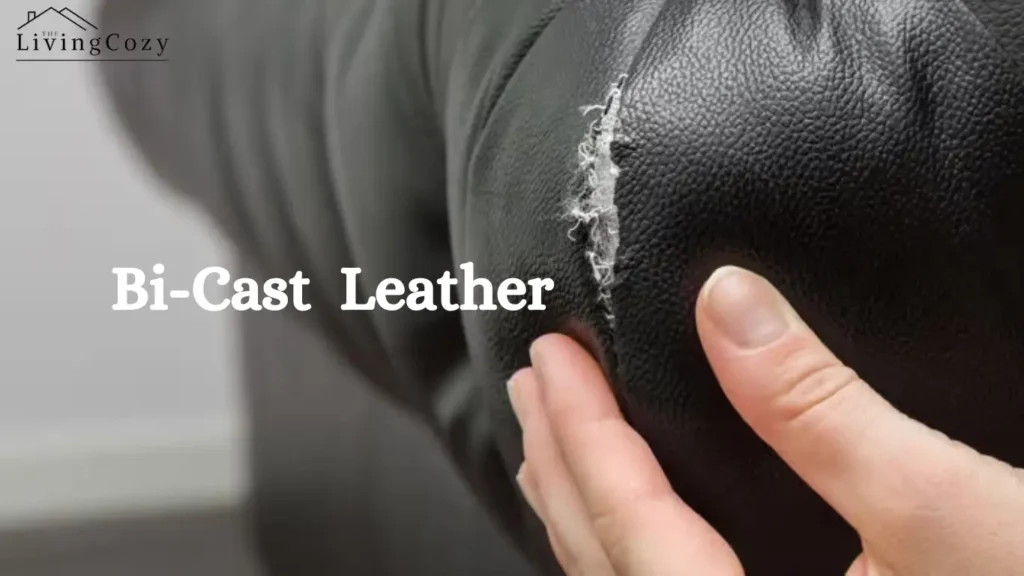
Bi-cast leather, or split leather, is a versatile material with a look and feel similar to genuine leather. This type of leather is created by removing the fibrous part of cowhide left over once the top grain has been removed and laminating it with a polyurethane coating.
This process makes bi-cast leather more affordable than genuine leather and gives it a uniform appearance and high durability.
One unique aspect of bi-cast leather is its ability to resist stains and scratches, making it ideal for furniture upholstery and fashion accessories.
Some critics argue that bi-cast leather may not be as environmentally friendly as other alternatives due to the heavy use of chemicals in production.
Despite this, its popularity continues to grow due to its affordability and ability to imitate the look of more expensive leather. Bi-cast leather can resist stains and scratches, making it ideal for furniture upholstery and fashion accessories.
Faux Leather:
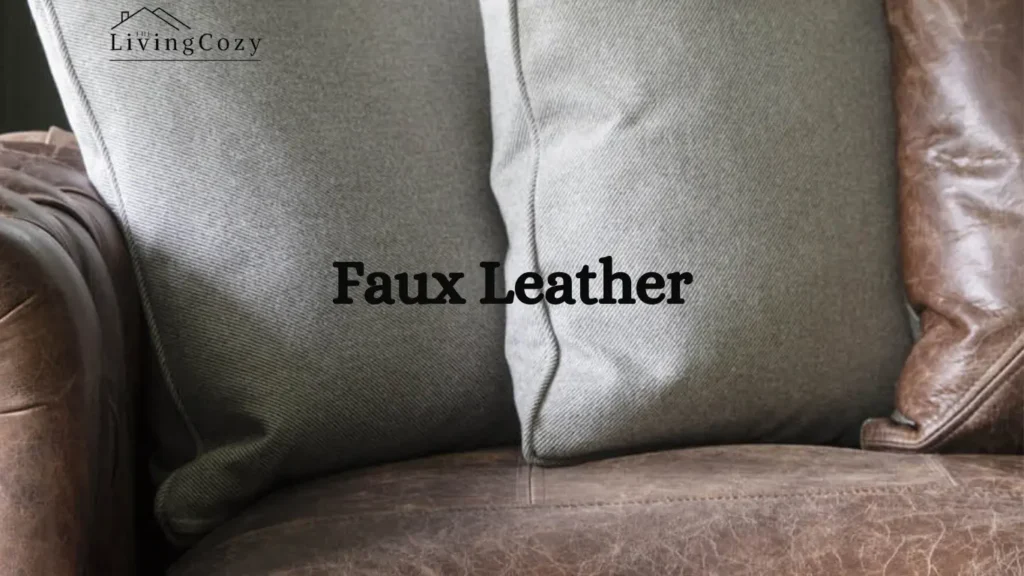
Faux leather, often vegan leather, has been gaining popularity for its cruelty-free and sustainable appeal.
While traditionally made from polyurethane, newer versions incorporate innovative materials like pineapple leaves and cork, further enhancing its eco-friendly credentials. This intersection of fashion and sustainability has paved the way for faux leather to become a staple in many ethical wardrobes.
One of the most intriguing aspects of faux leather is its versatility. It can be transformed into a wide range of products, from stylish handbags to elegant upholstery.
The durability and easy maintenance of faux leather make it attractive for those seeking long-lasting, low-maintenance alternatives to genuine animal hides.
Why Is My Leather Couch Peeling?
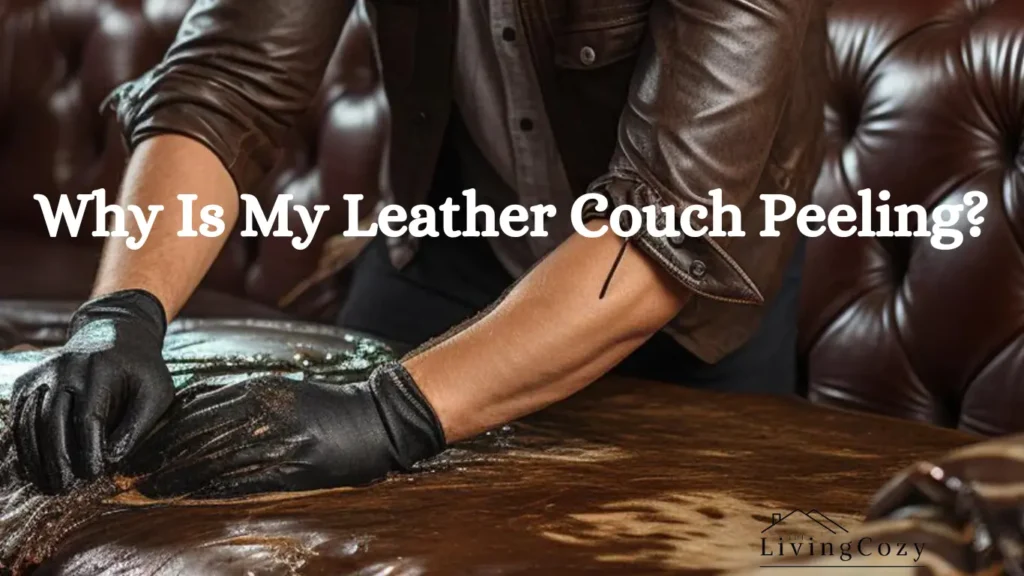
The peeling of a leather couch can be attributed to a few common factors, with one of the most prevalent being low-quality or bonded leather.
Many furniture manufacturers cut costs using subpar materials that aren’t as durable as genuine leather, leading to premature peeling and cracking.
Excessive heat and sun exposure can accelerate the breakdown of the leather’s protective coating, causing it to peel over time.
How to Fix a Peeling Leather Couch?
To fix a peeling leather couch, the first step is to assess the extent of the damage. If it’s just a small area peeling, you can use a leather repair kit to fix it.
These kits usually include a filler and colour-matching compound that can effectively conceal the peeled area.
Also, if the peeling is more widespread, you may need to consider reupholstering the entire couch with new leather or faux leather fabric for a long-term solution.
The DIY approach involves using liquid leather or vinyl repair kits, which can be effective for minor peeling issues.
Clean the affected area, apply the filler and adhesive according to the instructions provided with the kit, and then smooth out any excess material for a seamless finish.
Applying leather conditioner regularly can help prevent future peeling by keeping the leather hydrated and supple.
Peeling Leather Couch Repair:
Using a leather repair kit specifically designed to address peeling issues. These kits often include a blend of compounds and dyes that help restore the appearance of the leather, giving it a new lease on life.
It’s important to carefully follow the instructions included with the kit and take your time to ensure a thorough and seamless repair.
Conclusion:
Repairing a peeling leather couch can be rewarding and cost-effective. Following the steps outlined in how to fix a peeling leather couch, you can restore it to its former glory and extend its lifespan.
Remember to take your time and be patient during the process, as rushing can lead to less-than-desirable results. You can enjoy a beautifully restored leather couch for years with the right tools and techniques.
Take care of your furniture. It will thank you.
FAQ’s:
Can you fix a leather couch that is peeling?
Yes, you can fix a peeling leather couch using a leather repair kit or professional services.
How many years should a leather sofa last?
A well-maintained leather sofa can last up to 15-20 years.
How do you prevent leather from peeling?
Regular conditioning and keeping leather away from direct sunlight can help prevent peeling.
How often should I condition my leather items?
Condition your leather items every 6-12 months, depending on use and environmental conditions.

